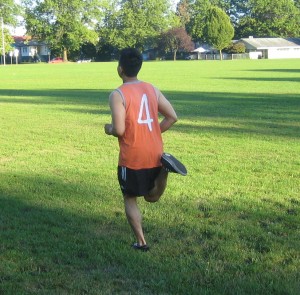Those who love to run face the risk of injuring their plantaris and soleus in the calf region. In some circumstances, a damaged plantaris muscle is frequently linked with calf ache and damage to the soleus muscle. It is vital that the individual consults a doctor if a lower leg injury is suspected after running. In doing so, the doctor can determine the appropriate treatment so that the individual can resume activity.
What is the plantaris muscle?
The plantaris muscle is described as a thin band of muscle tissue that helps bend the ankle and knee. This narrow muscle starts behind the knee joint and extends down to the rear part of the heel, close to the Achilles tendon. The muscle is commonly mistaken as a nerve but its motor function is irrelevant, which makes it the suitable candidate for surgical grafts and restoration of other muscles in the body.
What is the soleus muscle?
The soleus muscle is a strong calf muscle that allows the ankle to flex. The muscle starts right under the rear of the knee joint. The head of this muscle bulges out along the back of the upper part of the lower leg and tapers down toward the heel where it eventually combines with the gastrocnemius aponeurosis to form the Achilles tendon.

Potential injuries
Even though the function of the plantaris is irrelevant, it can trigger pain due to injuries such as a ruptured Achilles tendon. Abuse of the muscle can also transpire which are triggered by jumping or running. This overuse injury involving the plantaris muscle is called as tennis leg. Take note that the injury will not always originate in the plantaris.
The occurrence of tears in the soleus muscle or head of the gastrocnemius can also trigger pain in the plantaris and eventually lead to tennis leg. The constant movement from running adds a substantial amount of load on the ankle when the knee is in an extended position which is when injuries to both the plantaris and soleus muscles frequently occur. These injuries due to running can feel as if the muscles are struck with force.
What are the symptoms?
Pain and swelling are the usual indications of tennis leg which sooner or later triggers the muscles to become tender. The pain from the damage can become intense after the individual stops running and rests for several hours. As for the swelling, it can start at the muscle head up to the ankle and foot and can cause severe pain if the ankle is flexed.
Treatment
In most cases, the doctor will recommend cryotherapy which involves the use of low temperatures to cool the body parts. Other modes of treatment include ultrasound therapy and passive stretching. The post-therapy treatment often includes strength training.
In minor cases of pain in the soleus muscle, the first aid measure is to apply an ice pack on the calf for 10-15 minutes after running. This should be followed by basic calf muscle stretching and heel lifts.
